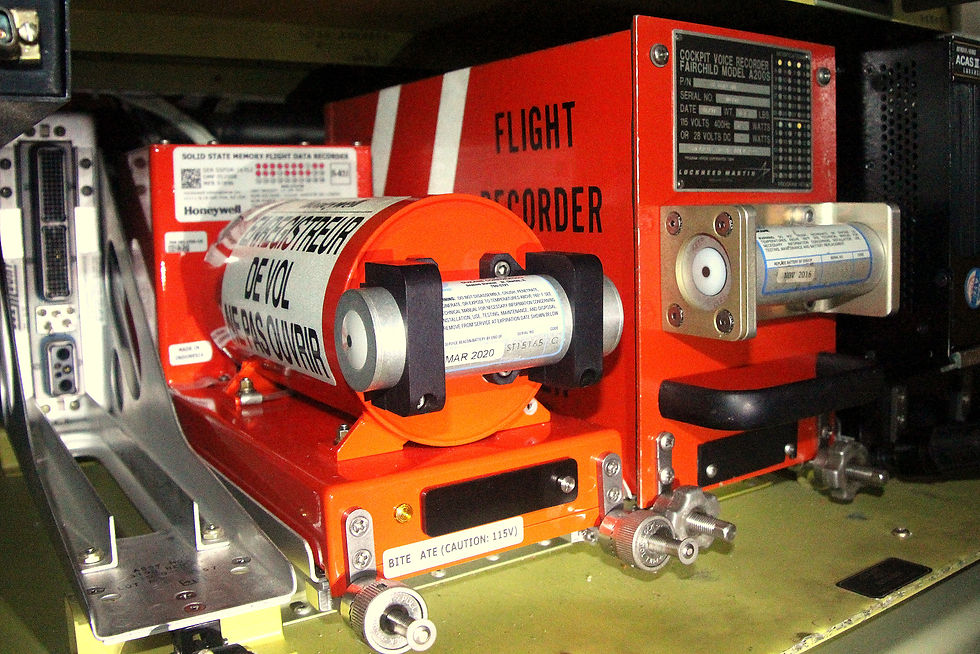Aircraft black boxes, keeping secrets in the midst of chaos
- Marketing Central Aerospace
- May 17, 2024
- 2 min read
Updated: Jan 13

There are devices that defy expectations and confirm human ingenuity in the midst of adversity, such as black boxes. How is it possible that these seemingly simple pieces are able to withstand the ravages of an air crash and, in addition, provide essential information to understand what happened? Let's dive into this story, from the conception of the black boxes to their future technological advances.
What color are the black boxes of an aircraft?

Despite their name, the black boxes are orange, a detail designed to make them more visible in case of an accident. They are built to withstand the most extreme conditions: impacts, scorching temperatures, immersion in water, etc. Nothing seems to be able to destroy their valuable contents.
Their durability lies in the innovative Crash - Survivable Memory Unit (CSMU), which protects data stored on solid-state memory chips. These units are designed to withstand impacts equivalent to drops from kilometers high, as well as extreme pressures and temperatures.
What is an aircraft black box used for?
When a plane crashes, the black boxes become the silent witness to what happened in the moments leading up to the disaster.
The black boxes are actually two: the flight data recorder (FDR) and the cockpit voice recorder (CVR). Together, they collect information, from technical flight details to conversations between pilots.
How much data can it store?

Let's now talk about the impressive data capabilities housed in these black boxes. A modern flight data recorder (FDR) can record up to 25 hours of flight data.
They include different parameters, from speed, altitude and engine pressure. Also joystick position, landing gear configuration and engine fuel temperature.
On the other hand, it can record cockpit voice recorder (CVR) from the last two hours of sound. These data capabilities are not only impressive in their breadth, but also in their usefulness for understanding what happened in the critical moments before an aircraft crash.
The importance of black box recovery
The recovery of aircraft black boxes is a race against time. Specialized teams work hard to locate and rescue these vital pieces, often facing extreme conditions. Once recovered, the black boxes are carefully transported to laboratories where experts meticulously analyze every piece of data.
The future of aircraft black boxes
Recent advances in black boxes include the ability to record visual data, which provides a more complete view of what is happening in the cockpit. In addition, some black boxes now have the ability to automatically separate from the aircraft in the event of an overwater accident, facilitating recovery.
Although black boxes have been a lifesaver on countless occasions, there is still room for improvement. Future advances could include the incorporation of GPS devices for faster location, as well as satellite data transmission for even greater safety.
Black boxes are much more than just storage devices. They are a mainstay of aviation safety and silent testaments to human resilience in the face of adversity. These modest orange pieces remain the key to knowing how the events occurred.
It is a story of innovation, perseverance and, above all, safeguarding lives.
Rodrigo Perdomo Gutiérrez de Piñeres

Comments